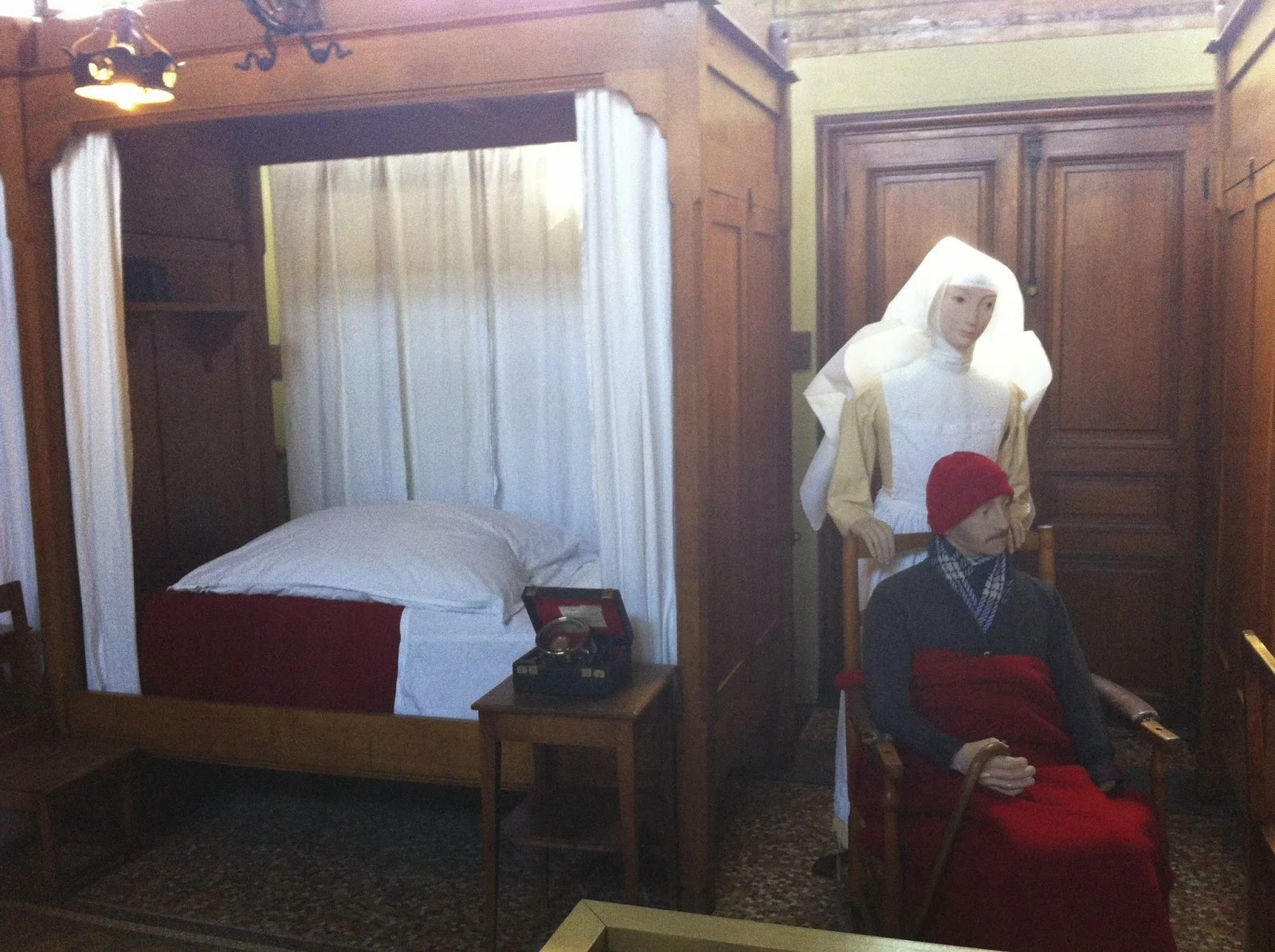My husband Laurent and I visited the village of Chassenon in the Limousin, which marks the beginning of the south of France. You can easily detect if you are in the south of France by looking at the roof tiles; those in the south of France have orange half-circle roof tiles.
At the end
of our route through highways and county roads, we crossed into the Charente
département where we found Chassenon.
Outside this village, you can find the Cassinomagus Gallo-Roman
archaeological site, dating around 200 C.E.
The French often vex Italians by telling them that their country has
just as many archaeological sites as Italy. The French also compete with the
Italians to turn these sites into venues for concerts, theatrical works,
lectures, and workshops in addition to guided tours.
So far the
Cassinomagus excavations have brought to light baths on three levels, a large
temple, 49 water channels, two small temples, one theater, and an aqueduct
according to the informative brochure from the visitor’s center. If you can understand French, you can
download this brochure from their website (www.cassinomagus.fr). Suspended boardwalks allow you
to walk above the baths under a roof.
You can visit the rest of the site on foot.
Cassinomagus
is a prime example of French cultural tourism with English tours now being
offered in the summer. The visitor’s
brochure, though, lists many examples of how to make an archaeological site
part of the intellectual life of a
community as well as a site for relaxation, cultural activities, workshops for
children, and cultural activities. I
have chosen several of the activities at Cassinomagus for the 2012 year in its
French-language visitor’s brochure as suggestions for making local historical
sites a sought after place to visit no matter where one lives.
Cultural
tourism as Cassinomagus begins with highlighting a monthly storytelling
series. The stories in French deal with
how one becomes a storyteller, stories of fairies and pixies, creation myths
where women play a leading role, Greek and Roman myths such as Eros and Psyche,
Indo-European sun god myths, and a play for children focusing on medieval and
traditional stories about the wolf, the fox, and the weasel.
There is a
wrestling (lutte Gréco-Romain) club for children and adults. A Roman garden has been created on the site
called the Gardens of Pliny the Elder (25 – 79 C.E.). Pliny wrote all the documentation that made
it possible to recreate Roman gardens.
The visitor’s guide to Cassinomagus says that there are plants here for
medicine, aromatics, decoration, utilitarian purposes such as dyes and fabrics,
foods, and perfume-making in the Roman garden.
In addition, there are treasure hunt nights for a mystery object, dress balls, permanent and temporary exhibits, guided visits, conferences with archaeologists on European Patrimony Day and National Archaeology Day.
In addition, there are treasure hunt nights for a mystery object, dress balls, permanent and temporary exhibits, guided visits, conferences with archaeologists on European Patrimony Day and National Archaeology Day.
Lectures at
the Cassinomagus site for 2012 include “Math of the Gaules,” “Roman Life at
Banquets,” “Photographic Tours in Roamn Gaul,” “Horticulture or the Romanization
of Gaul by Plants,” and “Ancient Complexes in the Massif Central of
France.” There are philosophical
cocktail hours where visitors can discuss topics such as “Political Power and
the Control of the Electorate.”
Children’s workshops include learning how to carry out an archaeological
dig, ancient games, wrestling, and arts and crafts of the Gallo-Roman
world. Schools are welcome for visits to
the site as well.
Big events
include National Archaeology Day with films and archaeologists, Star Gazing
Nights with a local astronomy club complete with a buffet, family days at the
site, and the Friends group holding a meeting where professions related to
antiquity are discussed according to the visitor’s brochure.
The
Gallo-Roman theatre is in constant use as well and provides entertainment such
as comedians, classical music, new music concept shows such as OVNI (Observance
Viellistique Non Identifiée), theatre featuring French classics with a twist such
as presenting them as street theatre, dance programs and jazz according to the
visitor’s brochure.
I imagine
tickets are in short supply for the Cassinomagus shows and the lectures and
clubs must be well attended. The site is
outside the small village of Chassenon and somewhat difficult to find the first
time. Chassenon, however, benefits from
the cultural offerings of a much larger town and probably has many regional
tourists come to Cassinomagus archaeological site.
Not every
country has Gallo-Roman ruins in the fields, but every culture has elements
that could be used to teach tourists about the history and geography that make
their culture unique and interesting.
Cassinomagus provides numerous examples of how to organize a site for
cultural tourism.
By Ruth Paget, Author of Eating Soup with Chopsticks and Marrying France
Click here for: Ruth Paget's Amazon Books
Click here for: Ruth Paget's Amazon Books
 |
| Ruth Paget Selfie |














